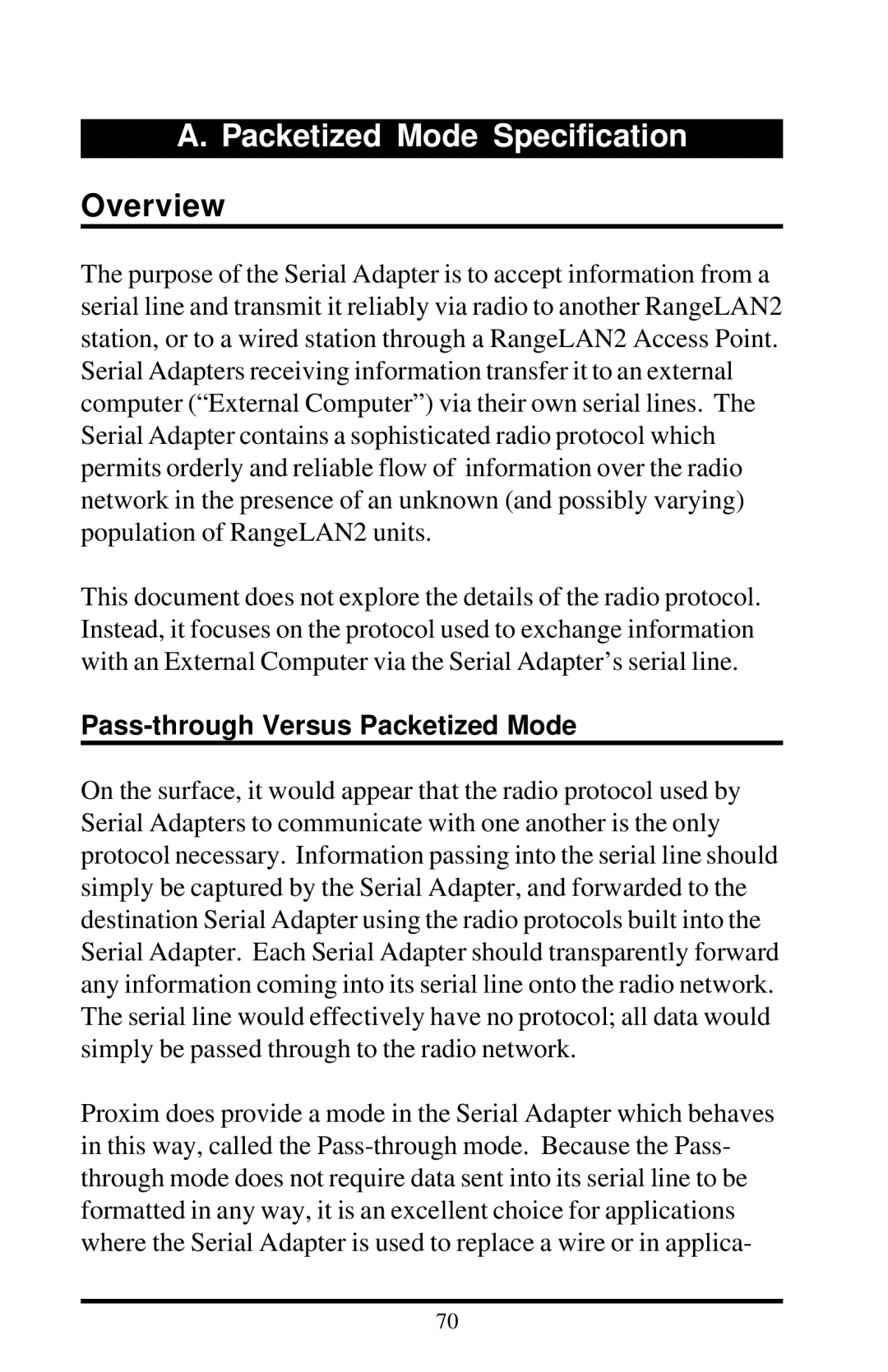
A. Packetized Mode Specification
Overview
The purpose of the Serial Adapter is to accept information from a serial line and transmit it reliably via radio to another RangeLAN2 station, or to a wired station through a RangeLAN2 Access Point. Serial Adapters receiving information transfer it to an external computer (“External Computer”) via their own serial lines. The Serial Adapter contains a sophisticated radio protocol which permits orderly and reliable flow of information over the radio network in the presence of an unknown (and possibly varying) population of RangeLAN2 units.
This document does not explore the details of the radio protocol. Instead, it focuses on the protocol used to exchange information with an External Computer via the Serial Adapter’s serial line.
Pass-through Versus Packetized Mode
On the surface, it would appear that the radio protocol used by Serial Adapters to communicate with one another is the only protocol necessary. Information passing into the serial line should simply be captured by the Serial Adapter, and forwarded to the destination Serial Adapter using the radio protocols built into the Serial Adapter. Each Serial Adapter should transparently forward any information coming into its serial line onto the radio network. The serial line would effectively have no protocol; all data would simply be passed through to the radio network.
Proxim does provide a mode in the Serial Adapter which behaves in this way, called the
70
